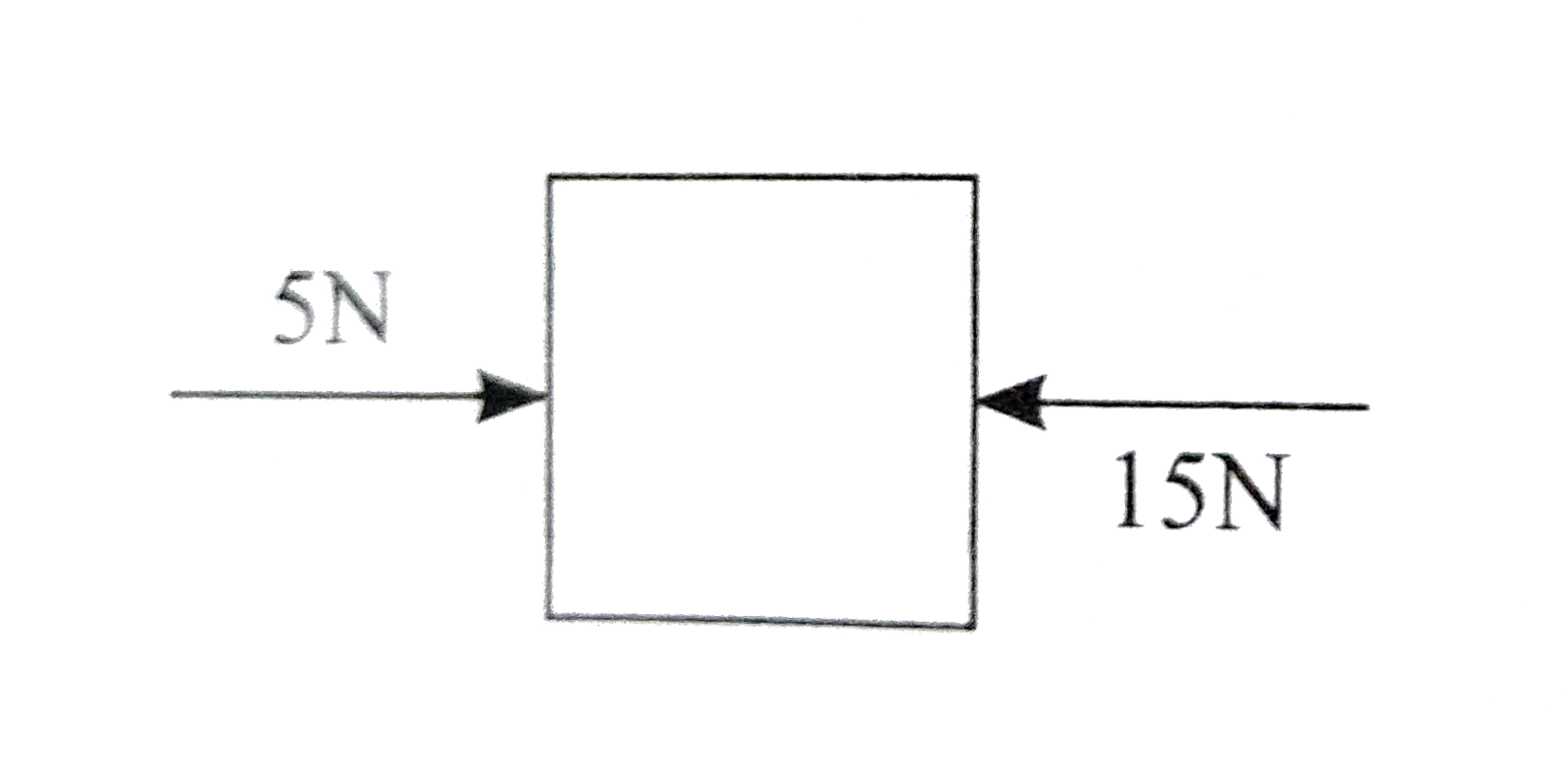If a 5N and a 15 N forces are acting opposite to one another . Find the resultant force and the direction of action of the resultant force Solution in Tamil
The two force are unlike parallel forces
Let P=5N,Q=15N
∴ Resultant force (R )=P−Q
=5+(−15)=−10N
R=−10N.
∴ The resultant force acting along the direction of ..Q...

Topper's Solved these Questions
- LAWS OF MOTIONBOOK - FULL MARKSCHAPTER - LAWS OF MOTIONEXERCISE - TEXTUAL EVALUATION (VII. Solve the given problems)
4 Videos
- LAWS OF MOTIONBOOK - FULL MARKSCHAPTER - LAWS OF MOTIONEXERCISE - TEXTUAL EVALUATION (VIII. Answer in detail.)
7 Videos
- LAWS OF MOTIONBOOK - FULL MARKSCHAPTER - LAWS OF MOTIONEXERCISE - TEXTUAL EVALUATION (V. Assertion & Reasoning.)
2 Videos
- ELECTRICITYBOOK - FULL MARKSCHAPTER - ELECTRICITYEXERCISE - Additional Questions (VIII Numerical Problems
4 Videos
- NUCLEAR PHYSICSBOOK - FULL MARKSCHAPTER - NUCLEAR PHYSICSEXERCISE - Additional Questions (IX. Additional HOT Questions)
4 Videos
Similar Questions
Two bodies have a mass ratio of 3:4. The force applied on the bigger mass produces an acceleration of 12 ms−2. What could be the acceleration of the other body , if the same force acts on it .
View SolutionWhat are the types of inertia ? Give an example for each type.
View SolutionAssertion : The sum of the clockwise moments is equal to the sum of the anticlockwise moments.
Reason : The principle of conservation of momentum is valid if the external force on the system is zero .
View SolutionShow that one ampere is equivalent to a flow of 6.25×108 elementary charges per second.
View SolutionWhy are neutrons very effective as bombarding particles?
View SolutionTow forces acting on a paritcle in opposite directions have a resultant 1 N . If they act at right angle to each other, the resultant is 5 N . Find the values of two forces.
View SolutionThe resultant ot two forces acting at an angle of 15^@ ii 10 N and is peroendicular to one of the forces. The other force is .
View SolutionTwo forces acting in opposite direction have resultant 10 N and when acting perpendicularly have resultant 50 N . Find the magnitude of forces.
View SolutionA force 3 N is acting along the NE and another force 4 N is acting the NW . Find the angle made by the resultant force with north.
View SolutionThe maximum and minimum magnitudes of the resultant of two forces are 5 N and 5N respectively. Find the magnitude of resultant force when act orthogonally to each other.
View SolutionTwo constant forces 4 N and 5 N act on a body in opposite directions .Find the resultant force on the body
View SolutionIf a 5N and a 15 N forces are acting opposite to one another . Find the resultant force and the direction of action of the resultant force
View SolutionTwo forces 12N and 5N are acting at right angles to each other. Find the magnitude and direction of the resultant force.
View SolutionWhen two forces are acting along the same direction, their resultant is 10N. When the same two forces are acting opposite to each other, their resultant is 8N. Find the forces and their resultant when the angle between them is 45∘
View Solution8 न्यूटन का एक बल पूर्व दिशा में तथा 6 न्यूटन का दूसरा बल उत्तर दिशा में कार्य करता है | दोनों बलों का परिणामी ज्ञात कीजिए|
View SolutionTwo non-collinear forces, one of 10 N and another of 6 N act upon a body. The directions of the forces are unknown. The resultant force on the body is :
View Solution
